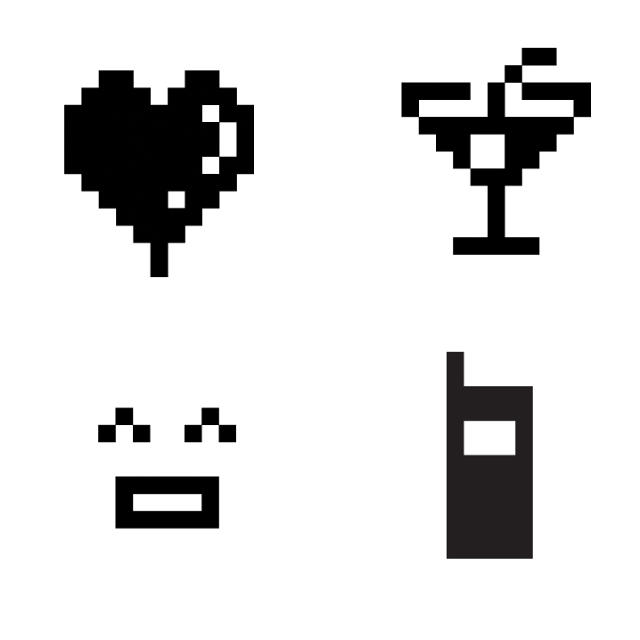The Museum of Modern Art has acquired 176 emoji designed by Shigetaka Kurita in 1999, calling them "humble masterpieces."<3

Pictorial communication has been part of human culture for thousands of years; just look at the petroglyphs, cave paintings, and hieroglyphics of ancient civilization. Fast forward a few millennia and you've got dingbats, wingdings, and, now, emoji—those illustrated symbols that add an extra layer of expression to the dry world of text-based conversation. Emoji have become engrained in the way we communicate to the point where they're vehicles for political, cultural, and social speech. Now, emoji have become part of MoMA's collection, legitimizing them as works of art.

"These 12 x 12 pixel humble masterpieces of design planted the seeds for the explosive growth of a new visual language," wrote Paul Galloway, an architecture and design collection specialist at MoMA, in a Medium post about the acquisition. "Filling in for body language, emoticons, kaomoji, and emoji reassert the human in the deeply impersonal, abstract space of electronic communication."
The emoji MoMA decided to collect aren't the same symbols you and I see on our phones today; they're the work of designer Shigetaka Kurita who, in 1999, developed 176 pixelated images for the Japanese telecommunications company NTT DOCOMO, which desired a more compelling interface for its "i-mode" mobile Internet software. They remained relatively obscure in western culture until 2010 when the Unicode Consortium—the organization overseeing how text is coded into computer-readable language—translated the symbols. Today, those graphics have evolved into the hundreds of characters we recognize today.
While some people might  the language of sexts exhibited alongside Picassos and van Goghs, the acquisition fits in with the museum's broader strategy to collect interaction design, interfaces, information systems, and communication devices—works of design that shape human behavior just as much as physical objects. In 2010, the museum opened the floodgates for this type of collecting by acquiring the "@" symbol and in the years since, it's become more experimental by welcoming video games into its coffers.
the language of sexts exhibited alongside Picassos and van Goghs, the acquisition fits in with the museum's broader strategy to collect interaction design, interfaces, information systems, and communication devices—works of design that shape human behavior just as much as physical objects. In 2010, the museum opened the floodgates for this type of collecting by acquiring the "@" symbol and in the years since, it's become more experimental by welcoming video games into its coffers.
"Our job, since our beginning, has been to reflect the art of our time," says Paul Galloway, an architecture and design collection specialist at MoMA. "In the 1930s that meant films, photographs, and cubist paintings. Today, an enormous amount of creative energy is manifested through the digital realm, whether that be graphic design, video games, interactive software, or emoji. If we want to reflect the art of our time in 2016, we must feature works of digital nature."

The actual "thing" MoMA is acquiring is a digital file of Kurita's 176 emoji, which the museum is permitted to display as it sees fit. A forthcoming exhibition will feature emoji animations on monitors, printouts, and maybe even wallpaper, Galloway says.
To that we say 






 .
.